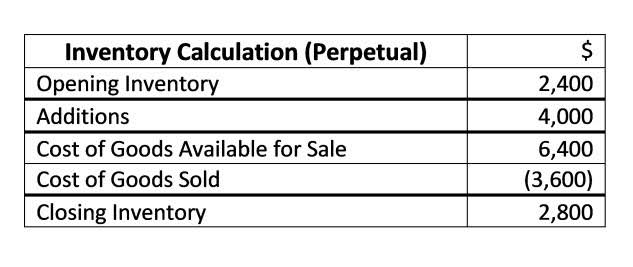
Double Entry Bookkeeping is here to provide you with free online information to help you learn and understand bookkeeping and introductory accounting. There is also such a thing as negative brand equity, which is when people will pay more for a generic or store-brand product than they will for a particular brand name. Negative brand equity is rare and can occur because of bad publicity, such as a product recall or a disaster. Home equity is often an individual’s greatest source of collateral, and the owner can use it to get a home equity loan, which some call a second mortgage or a home equity line of credit (HELOC). An equity takeout is taking money out of a property or borrowing money against it. But debt is also the riskiest source of funding for businesses because the latter must honor the agreement with creditors to pay interest on a regular basis regardless of the state of the economy.
What does shareholders’ equity tell you about a company?
Yes, stockholders’ equity can be negative when a company’s liabilities exceed its assets. This situation, known as negative equity, may signal financial distress or insolvency, indicating that the company might struggle to meet its obligations without additional financing or restructuring. For investors, stockholders’ equity is a window into a company’s financial position. Investors also use equity to compare companies within the same industry, identifying which ones offer the best value.

Investor’s Equation
Stockholders’ equity is the company that has settled the value of assets available to the shareholders after all liabilities. It provides information relating to equity-related activity to the users of financial statements and it is Record Keeping for Small Business one of the financial elements used by analysts to understand the company’s financial progress. Calculating stockholders equity is an important step in financial modeling.
#3 – Net Profit and Dividend Payment
Retained earnings are part of shareholder equity and represent net income that is not paid to shareholders as dividends. Think of retained earnings as savings since it represents a cumulative total of profits that have been saved and put aside or retained for future use. Retained earnings grow larger over time as the company continues to reinvest a portion of its income. In addition, shareholder equity can represent the book value of a company.
- Companies can leverage strong equity to secure loans, fund new projects, or weather financial downturns.
- Investors usually seek out equity investments as they provide a greater opportunity to share in the profits and growth of a firm.
- Shareholder equity can also be expressed as a company’s share capital and retained earnings less the value of treasury shares.
- The statement of shareholders’ equity may intimidate some small business owners because it’s a bit more complicated than other financial calculations.
Retained earnings

Unlike common stock, preferred shares typically offer fixed dividend payments that are paid out before dividends to common shareholders. This provides more stable and predictable income, making preferred stocks attractive to investors focused on regular payouts. A shareholders’ equity refers to the portion of a company’s net worth that the shareholders are entitled to receive when it liquidates.
- To calculate a company’s equity, you essentially take its total assets and subtract its total liabilities.
- If all of the company’s assets were liquidated and used to pay off debts, the shareholder’s equity is the amount that would be left over.
- Shareholders’ equity indicates the money that would belong to the company’s owners and shareholders after it sold all of its assets and took care of all its liabilities.
- When it is used with other tools, an investor can accurately analyze the health of an organization.
- A riskier firm will have a higher cost of capital and a higher cost of equity.
Other Gains & Losses
Total equity (book value) might be equivalent to total shareholder equity on a company’s balance sheet if you look at it from the standpoint of book value. When speaking of actual equity, you are effectively taking into account the whole market value of the company’s assets minus the sum of its liabilities. The overall equity (market value) in this situation will not be equal to the whole shareholder equity (book value). In accounting for share-related transactions, a few more phrases are crucial.
- Owning stock in a company gives shareholders the potential for capital gains and dividends.
- Total equity (book value) might be equivalent to total shareholder equity on a company’s balance sheet if you look at it from the standpoint of book value.
- It is the amount left with or kept aside by the company after it pays the dividend from net income.
- As you can see in the diagram below, the return on equity formula is also a function of a firm’s return on assets (ROA) and the amount of financial leverage it has.
- Conceptually, stockholders’ equity is useful as a means of judging the funds retained within a business.
This financial document transparently provides investors with crucial information about their equity value. As for the “Treasury Stock” line item, the roll-forward calculation consists of one single outflow – the repurchases made in the current period. Here, we’ll assume statement of stockholders equity formula $25,000 in new equity was raised from issuing 1,000 shares at $25.00 per share, but at a par value of $1.00. The excess value paid by the purchaser of the shares above the par value can be found in the “Additional Paid-In Capital (APIC)” line item. Adam Hayes, Ph.D., CFA, is a financial writer with 15+ years Wall Street experience as a derivatives trader. Besides his extensive derivative trading expertise, Adam is an expert in economics and behavioral finance.

Low Shareholder’s Equity: What Does It Mean?
Home equity is roughly comparable to the value contained in homeownership. The amount of equity one accounting has in their residence represents how much of the home they own outright by subtracting from the mortgage debt owed. Equity on a property or home stems from payments made against a mortgage, including a down payment and increases in property value.
The ultimate aim of the statement remains to provide a brief movement for all the equity accounts within a specific period. Obviously, internal management also uses the financial position statement to track and improve operations over time. Through years of advertising and the development of a customer base, a company’s brand can come to have an inherent value. Some call this value “brand equity,” which measures the value of a brand relative to a generic or store-brand version of a product.
